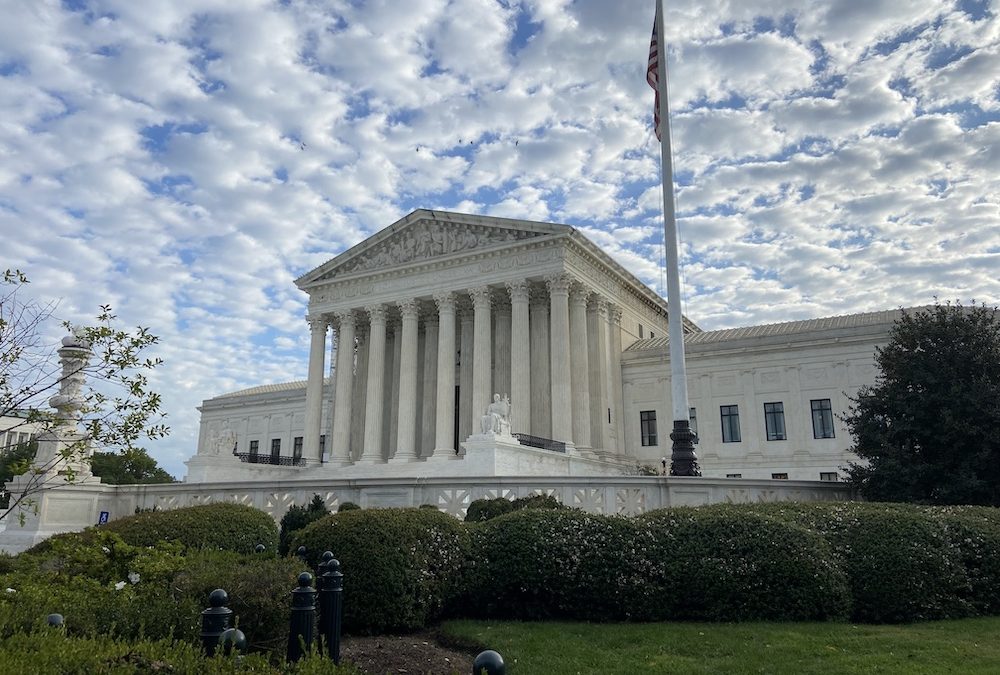WASHINGTON – The Supreme Court on Tuesday heard an oral argument about the burden of proof in a whistleblower retaliation case, and whether it falls on the employee or the employer.
The ruling of the Supreme Court would resolve a dispute in the lower courts, and could impact how juries decide whistleblower cases.
Under the Sarbanes-Oxley Act of 2022, publicly-traded companies are prohibited from retaliating against an employee who reports suspected fraud or security law violations. In 2014, Trevor Murray sued his former employer, UBS Securities, LLC, for violation of these whistleblower provisions.
While he was an employee of UBS Securities, Murray had to certify his financial reports under Securities Exchange Commission guidelines to confirm that his results were independently found. During this period, Murray filed complaints against some UBS leaders, charging that they illegally influenced him to skew his reports. Arguing that his firing was related to these complaints, a district court ruled in favor of Murray on the grounds of retaliatory termination.
UBS Securities appealed this decision, claiming the jury was not properly informed that Murray needed to prove the company intentionally fired him for blowing the whistle.
In a whistleblower case, the employee has to prove their action was protected by law and retaliated against. If this is done, the burden of proof shifts to the employer. For the employer to win the case, it must prove the alleged act of retaliation would have been made regardless of the whistleblowing. This is referred to as a burden shifting framework, or scheme.
Murray’s attorney argued the burden of proof can be clearly explained and derived from this framework test, which has been adopted and applied by Congress in previous cases. An attorney for the federal government agreed.
“If the Court doesn’t address the role of the burden-shifting scheme, you likely will leave open for litigation a cogent argument made by the other side,” said Anthony Yang, assistant to the solicitor general of the Justice Department.
Eugene Scalia, son of the late Justice Antonin Scalia, argued on the behalf of UBS Securities. Scalia claimed the framework was too subjectively interpreted, and the whistleblower must also prove that the retaliation was caused intentionally, not simply that it occurred.
“A question that’s been presented here is, ‘How much would we disturb the waters if we were to sort of glom together causation and intent?’,” said Scalia. “My answer is immensely.”
Many justices did not understand Scalia’s argument, including Justice Elena Kagan.
“I don’t understand that, Mr. Scalia,” she said. “Because everything that you just said, that seems to me exactly the question that the burden-shifting mechanism is all about.”
Identifying “mens rea,” the intent not the action, is part of the burden-shifting framework currently used by Congress.
Justice Neil Gorsuch was also confused by the company’s logic.
“But if I intend to treat you differently, that’s my mens rea . . . because of a protected trait, why isn’t that retaliation?” Gorsuch said.
The confusion between the petitioner and respondent’s definitions of cause and intent was shared by most justices.
“What I’m struggling with is trying to understand how causation and intent are different in this world,” said Justice Ketanji Brown Jackson. “When you’re talking about the reason, I guess, for the person’s having been fired, whether you say it as, ‘Employer, what caused you to fire this person?’ That’s causation. Or, ‘Employer, why did you fire this person?’ That’s intent. It seems to me they both get at the same thing.”
The Supreme Court ruling is expected to settle what framework a jury will use to decide cases in the future, and what evidence whistleblowers need to go to court.


